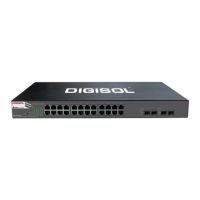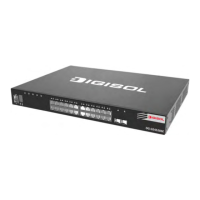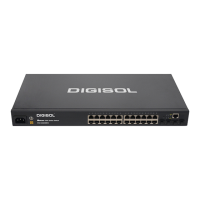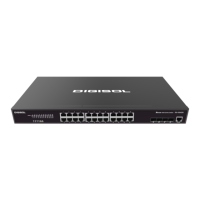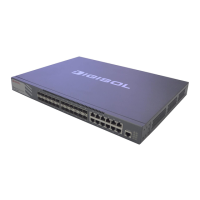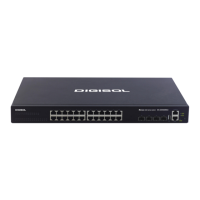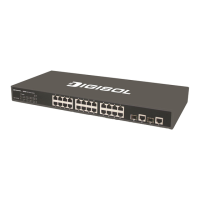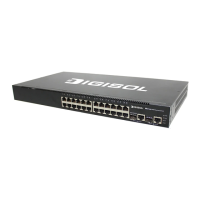C
HAPTER
10
| Spanning Tree
Configuring STP Global Settings
– 72 –
Once a stable network topology has been established, all bridges listen
for Hello BPDUs (Bridge Protocol Data Units) transmitted from the Root
Bridge. If a bridge does not get a Hello BPDU after a predefined interval
(Maximum Age), the bridge assumes that the link to the Root Bridge is
down. This bridge will then initiate negotiations with other bridges to
reconfigure the network to reestablish a valid network topology.
◆ RSTP - RSTP is designed as a general replacement for the slower,
legacy STP. RSTP is also incorporated into MSTP (Multiple Spanning
Tree Protocol). RSTP achieves must faster reconfiguration (i.e., around
1 to 3 seconds, compared to 30 seconds or more for STP) by reducing
the number of state changes before active ports start learning,
predefining an alternate route that can be used when a node or port
fails, and retaining the forwarding database for ports insensitive to
changes in the tree structure when reconfiguration occurs.
CONFIGURING STP GLOBAL SETTINGS
Use the STP Global Setting page to configure settings for STP which apply
globally to the switch.
PARAMETERS
The following parameters are displayed on the STP Global Setting page:
◆ Spanning Tree Status — Enables Spanning Tree on the switch.
(Default: Disabled)
◆ Force Version — Specifies the type of spanning tree used on this
switch. RSTP supports connections to either RSTP or STP nodes by
monitoring the incoming protocol messages and dynamically adjusting
the type of protocol messages the RSTP node transmits, as described
below. (Options: RSTP or STP; Default: RSTP)
■
RSTP Mode — If RSTP is using 802.1D BPDUs on a port and
receives an RSTP BPDU after the migration delay expires, RSTP
restarts the migration delay timer and begins using RSTP BPDUs on
that port.
■
STP Mode — If the switch receives an 802.1D BPDU (i.e., STP
BPDU) after a port's migration delay timer expires, the switch
assumes it is connected to an 802.1D bridge and starts using only
802.1D BPDUs.
◆ Priority — Bridge priority is used in selecting the root device, root
port, and designated port. The device with the highest priority becomes
the STP root device. However, if all devices have the same priority, the
device with the lowest MAC address will then become the root device.
Note that lower numeric values indicate higher priority.
(Options: 0-61440, in steps of 4096; Default: 32768)
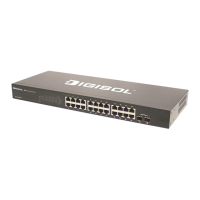
